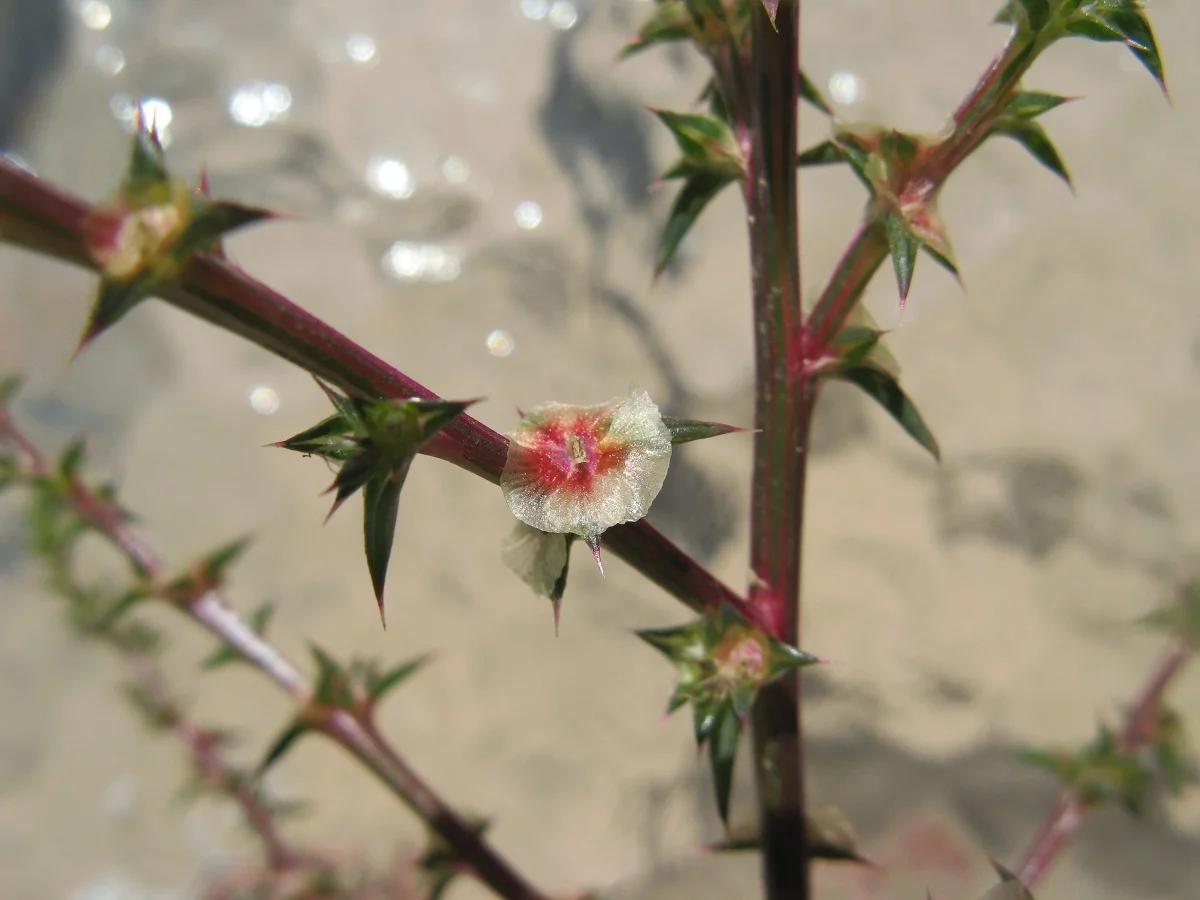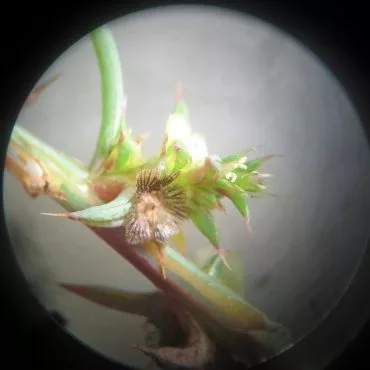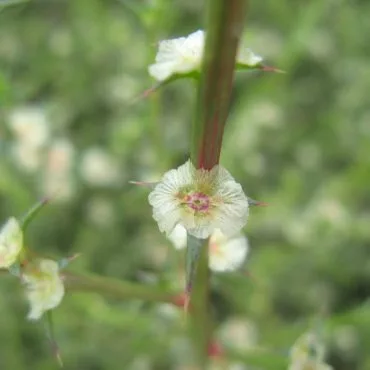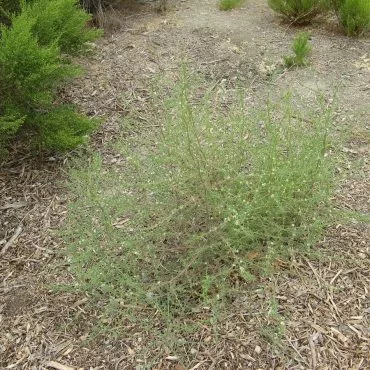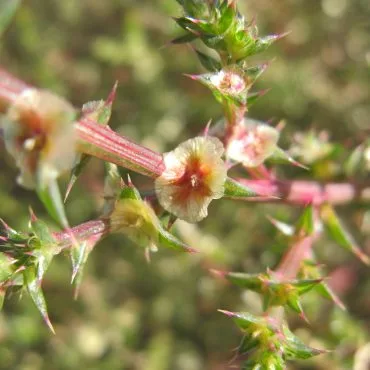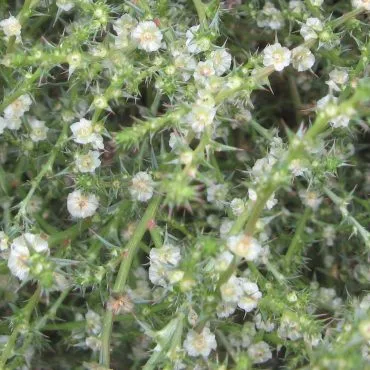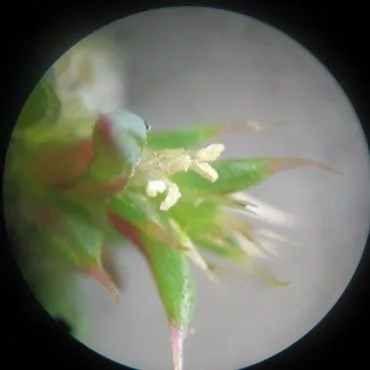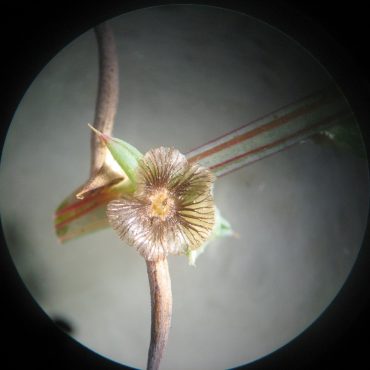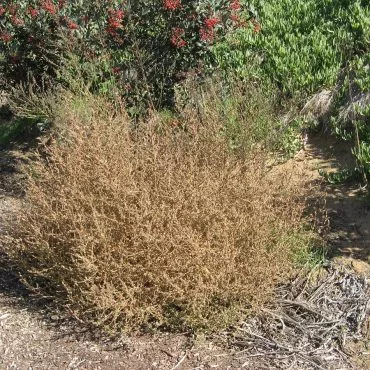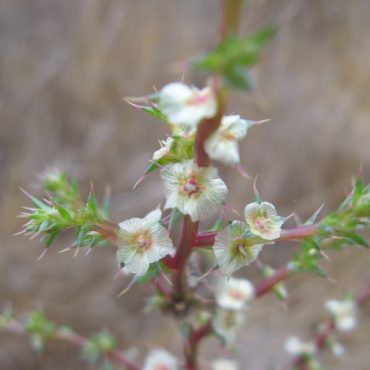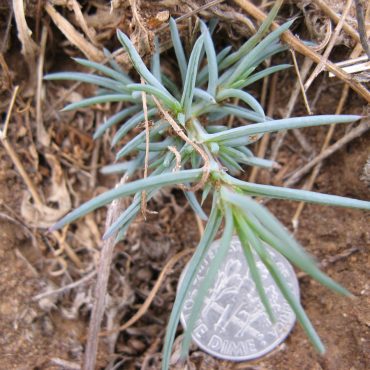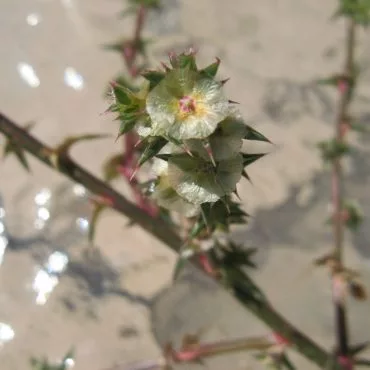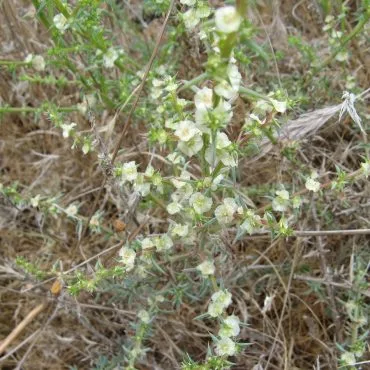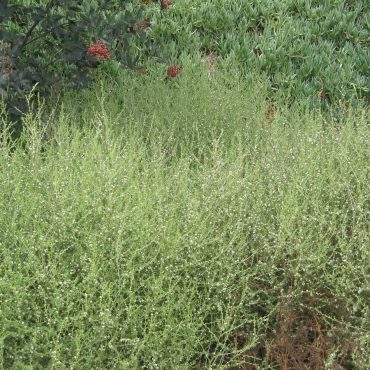See them tumbling down
Pledging their love to the ground!
Lonely, but free, I’ll be found
Drifting along with the tumbling tumbleweeds
Tumbling tumbleweeds – an iconic image of the Old West, along with wild mustangs, wagon wheels and Billy the Kid. In truth, the tumbleweed (or Russian thistle, Salsola tragus) is not native. It was introduced into the United States in the 1870’s – about the time the Santa Fe Railroad replaced the Santa Fe trail as a major transportation corridor westward. Since then, the plant has tumbled rapidly through the west, and into cowboy songs and movies, at the same time becoming one of the most noxious weeds of dry rangeland.
A tumbleweed is a prickly sphere. Flowers are tiny and lack petals, but a colorful collar develops around each small seed pod, giving the appearance of blooms. Ultimately, the entire plant breaks free from the ground and is tumbled by the wind, fragmenting the branches and dispersing the seeds of future plants. One plant may have tens of thousands of seeds.

